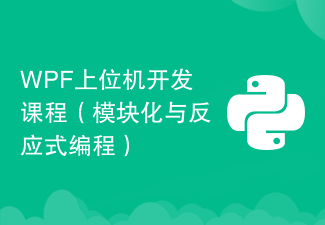通过使用 go 语言的内置测试框架,开发者可以轻松地为他们的代码编写和运行测试。测试文件以 _test.go 结尾,并包含 test 开头的测试函数,其中 *testing.t 参数表示测试实例。错误信息使用 t.error() 记录。可以通过运行 go test 命令来运行测试。子测试允许将测试函数分解成更小的部分,并通过 t.run() 创建。实战案例包括针对 utils 包中 isstringpalindrome() 函数编写的测试文件,该文件使用一系列输入字符串和预期输出来测试该函数的正确性。

Go 语言提供了强大的内置测试框架,让开发者轻松地为其代码编写和运行测试。下面将介绍如何使用 Go 测试包对你的程序进行测试。
在 Go 中,测试文件以 _test.go 结尾,并放在与要测试的包所在的目录中。测试文件包含一个或多个测试函数,它们以 Test 开头,后面跟要测试的功能。
以下是一个示例测试函数:
import "testing"
func TestAdd(t *testing.T) {
if Add(1, 2) != 3 {
t.Error("Add(1, 2) returned an incorrect result")
}
}*testing.T 参数表示测试实例。错误信息使用 t.Error() 记录。
可以通过运行以下命令来运行测试:
go test
如果测试成功,将显示诸如 "PASS" 之类的消息。如果出现错误,将显示错误信息。
子测试允许将一个测试函数分解成更小的部分。这有助于组织测试代码并提高可读性。
以下是如何编写子测试:
func TestAdd(t *testing.T) {
t.Run("PositiveNumbers", func(t *testing.T) {
if Add(1, 2) != 3 {
t.Error("Add(1, 2) returned an incorrect result")
}
})
t.Run("NegativeNumbers", func(t *testing.T) {
if Add(-1, -2) != -3 {
t.Error("Add(-1, -2) returned an incorrect result")
}
})
}假设我们有一个名为 utils 的包,里面包含一个 IsStringPalindrome() 函数,用于检查一个字符串是否是回文字符串。
下面是如何编写一个测试文件来测试这个函数:
package utils_test
import (
"testing"
"utils"
)
func TestIsStringPalindrome(t *testing.T) {
tests := []struct {
input string
expected bool
}{
{"", true},
{"a", true},
{"bb", true},
{"racecar", true},
{"level", true},
{"hello", false},
{"world", false},
}
for _, test := range tests {
t.Run(test.input, func(t *testing.T) {
if got := utils.IsStringPalindrome(test.input); got != test.expected {
t.Errorf("IsStringPalindrome(%s) = %t; want %t", test.input, got, test.expected)
}
})
}
}在这个测试文件中:
tests 数组定义了一系列输入字符串和预期的输出。for 循环遍历 tests 数组,并使用 t.Run() 创建子测试。utils.IsStringPalindrome() 函数并将其结果与预期结果进行比较。如果结果不一致,它使用 t.Errorf() 记录错误。以上就是如何在 Go 语言中测试包?的详细内容,更多请关注php中文网其它相关文章!

每个人都需要一台速度更快、更稳定的 PC。随着时间的推移,垃圾文件、旧注册表数据和不必要的后台进程会占用资源并降低性能。幸运的是,许多工具可以让 Windows 保持平稳运行。




Copyright 2014-2025 https://www.php.cn/ All Rights Reserved | php.cn | 湘ICP备2023035733号